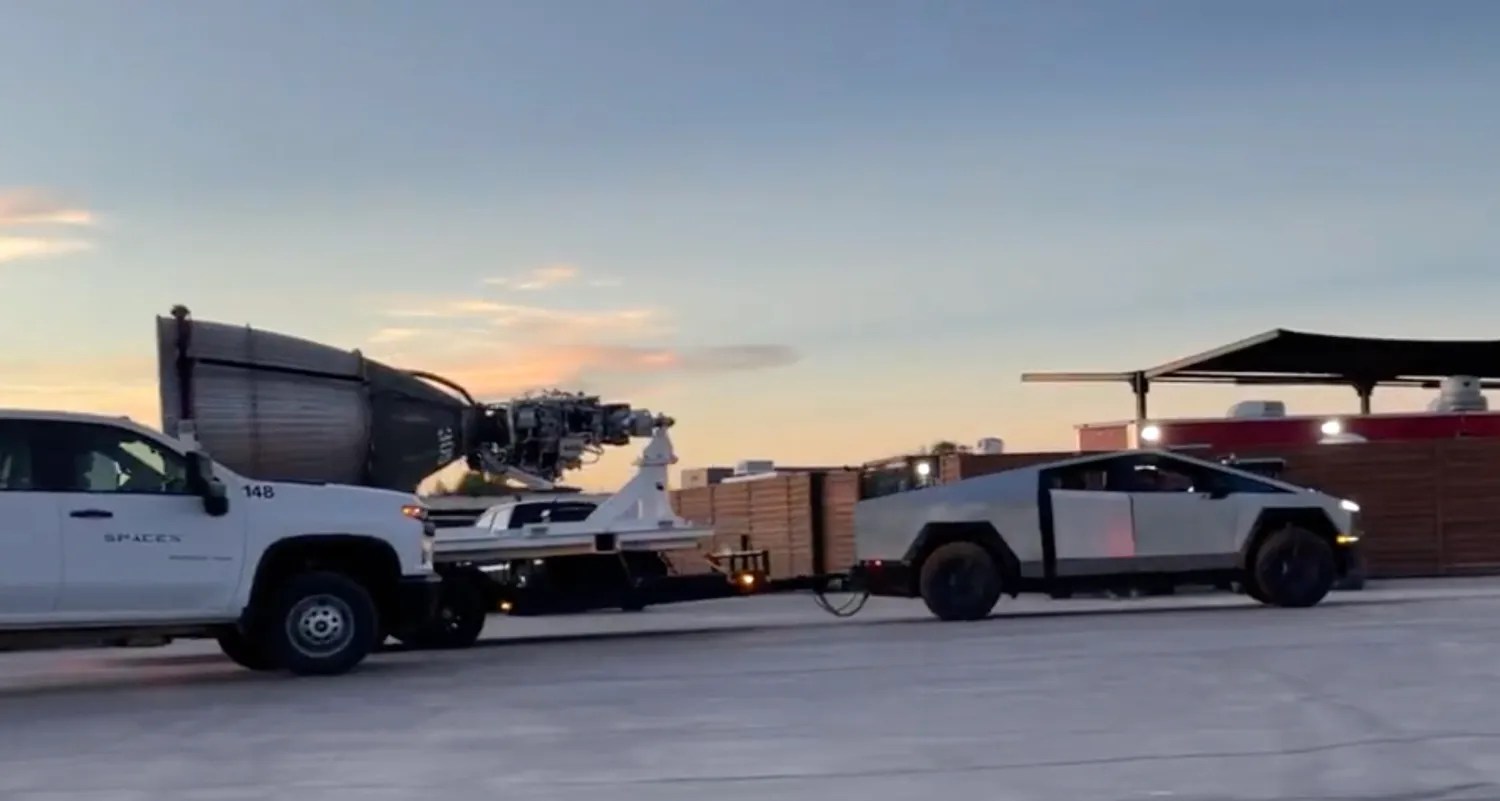
Tesla’s Cybertruck is gearing up to begin deliveries to customers after years from when pre-orders began. The rather unique looking electric pickup truck showed up at Starbase to film some promotional video using the large Raptor Vacuum engine.
Raptor Vacuum takes Inspire to the chin
Cybertruck showed up at Starbase Tuesday and was quickly put to the work moving one of SpaceX’s Raptor Vacuum engines that was delivered not that long ago. Video of its arrival and Raptor work was captured by the various residents and livestreams that watch Starbase 24/7.
Cybertruck is Tesla’s newest consumer vehicle line since the Model Y started deliveries in 2020. A couple months before the Model Y started production and deliveries, Tesla announced the Cybertruck, its entrance into the pickup truck market. While the Model Y was based off the very popular Model 3, the Cybertruck is completely new. Hence why it has been under development for so long.
Upon arriving at Starbase, it was hooked up to a trailer with the massive Raptor Vacuum engine used on Starship’s second stage. There are two versions of SpaceX’s Raptor engine, the smaller sea-level optimized version and the large vacuum optimized version (RVac). The difference is in the size of the engine bell. The engine used while in the upper atmosphere and the vacuum of space is much larger to support the lower pressure of space (or lack there of). This allows the engine to perform more efficiently outside Earth’s atmosphere.
RVac also features a regenerative cooled engine bell versus the ablatively cooled bell of the sea-level engines. While the sea-level Raptors are stated to weigh about 3,500 lbs, the RVac engine is most likely much heavier.
On Starship’s first stage, otherwise known as the Super Heavy Booster, 33 sea-level Raptors are installed – the most amount of engines ever attached to a rocket. On the second stage, or just simply called Starship, has six Raptors. Three of those are sea-level and are located in the center with the other three being the RVac fixed around the edges.
A fully integrated Starship rocket is the most powerful rocket ever launched, outperforming both NASA’s Saturn V and SLS moon rockets. SpaceX is currently awaiting approval form the FAA for a second launch hopefully this fall.
Join our Discord Server: Join the community with forums and chatrooms about space! Also, directly support us via a Server Subscription!
It seems like the massive size of RVac’s engine bell is a perfect image to show off Cybertruck’s towing capabilities as promotional videos have been getting shot with the two down in Starbase. Although it looks like someone missed some communication because an operator of the DJI Inspire (most likely 3) drone smacked right into the regenerative cooled engine bell of the RVac.
Surrounding Starbase is a TFR blocking any flights, general aviation or drones, from taking place. So this is how we know the drones is being used by either SpaceX or Tesla to capture footage of Cybertruck towing the RVac.
When push comes to shove, it looks like RVac can shove and take almost no damage! That just shows the build quality SpaceX is putting into Starship’s systems to be able to withstand some brutal environments.
The drone on the other hand, did not do well. From what I can tell it looks like Tesla was flying DJI’s latest professional quadcopter, the Inspire 3. That drone starts at $16,499 before any additional features like… a lens for the camera. I’m sure DJI’s customer support team is going to love that story as to why they’re sending their drone in for repairs.
Hopefully we’ll get to see the footage this drone got right before it met its end. We’ll also wait to see what Tesla shows off in what ever sort of content it creates with the Cybertuck-RVac duo.
FTC: We use income earning auto affiliate links. More.

Comments